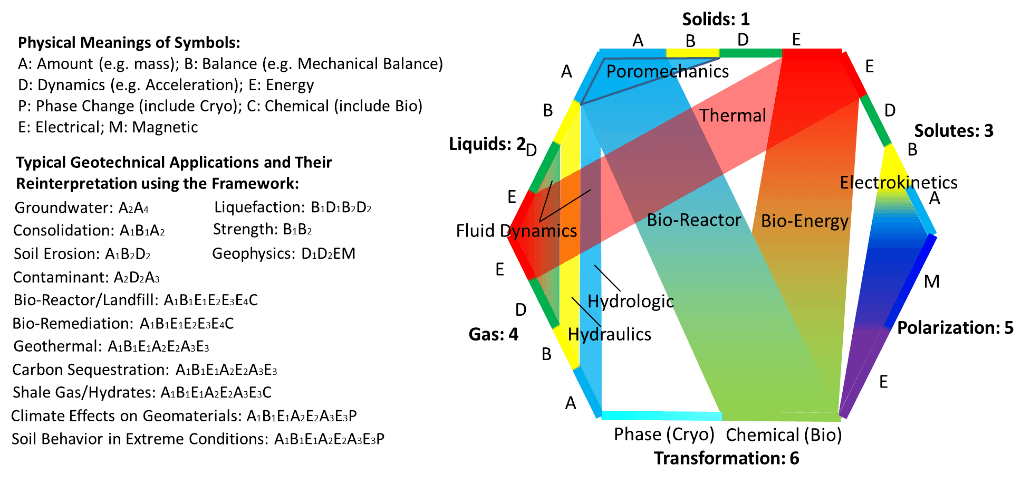Types of Multiphysics
How to Classify Multiphysics
The use of physical fields extends all over most science and engineering disciplines. However, a discipline or sub-discipline only primarily deals with one or a few physical fields. This fact makes multiphysics an extremely interdisciplinary topic and also poses challenges in enumerating the fields. However, the following fields can be identified by overviewing the core courses in the disciplines and publications on multiphysics: heat transfer (thermo-), pore water movement (hydro-), concentration field (concentro or diffuso/convecto/advecto), stress and strain (mechano-), dynamics (dyno-), chemical reactions (chemo- or chemico-), electrostatics (electro-), and magnetostatics (magneto-). In multiphysics, a multiphysical process is usually titled using compound words such as ``thermo-hydro-mechanical''. These words now appear as the birth birthmarks or tattoos of multiphysics. The prefixes, roots or suffixes in the parentheses after each physical field are the ingredients for cooking multiphysics. Each physical field is called a monolithic physical field, uniphysics, or single physics. Combinations of the above monolithic physics can lead to 247 possible types of multiphysics. However, the world of multiphysics is not only a game of combination in statistics. But instead, we coin a name and investigate a type of multiphysical phenomenon under this name based on the observations in nature and sciences and the needs from practice. Based on a review of multiphysics with an emphasis in porous materials, the most representative multiphysical processes are believed to the follows:
Another point deserving attention is that the orders of the roots in the name. Generally, it would be desirable to put the major process, cause or process of primary interest in the front. However, there is no widely accepted rule. For a process such as poroelasticity, it may even be a difficult job to judge which process is dominant, i.e., water movement and solid skeleton deformation.
Any multiphysical process can be reinterpreted using four fundamental mechanisms in the real phases: mass conservation, balance (static), oscillation (dynamic), and energy conservation, and mechanisms in two "latent" phases: polarization (electric and magnetic) and transformation (phase change and chemical reactions). Typical multiphysical phenomena are combinations of different components (right). Also, classic and highly active research topics in geotechnical engineering can be reinterpreted using the framework (left). As we move from classic topics to upcoming ones, the level of difficulty raises in the context of multiphysics.

There is more than one way to categorize and name multiphysics. For example, the multiphysics software COMSOL categorizes multiphysical phenomena based on applications. The most common multiphysics applications were divided into four major categories: electrical, mechanical, fluid, and chemical. Electrical applications include Joule heating, induction heating, microwave heating, piezoelectric effect, piezoresistive effect and electromechanical effects. The mechanical section consists of thermal expansion, thermal stress, and acoustic-structure interaction. The fluid section contains Navier-Stokes equation, Boussinesq approximation, nonisothermal flow, and fluid-structure interaction, poroelasticity, squeezed and sliding films. The chemical section comprises convection and diffusion. The advantage of this classification is that it is conducted based on applications, so it uses terms closer to applications. But the disadvantages are also very clear. The adopted terms do not effectively reveal the underlying mechanisms and cannot really reflect the real hierarchy and evolution of multiphysics and their relationships to monolithic physics. On the contrary, a classification purely based on the combinations of monolithic physics is not able to reflect the applications in the real world. For example, many combinations of monolithic physics may not have any existing applications at all. The classification system used in this book is a compromise between theories and applications. So you can see it still keeps the birthmarks or tattoos, but at the same time, adopts terms that are widely accepted but actually do not reflect the involved monolithic physics, such as hydrodynamics and poroelasticity.












